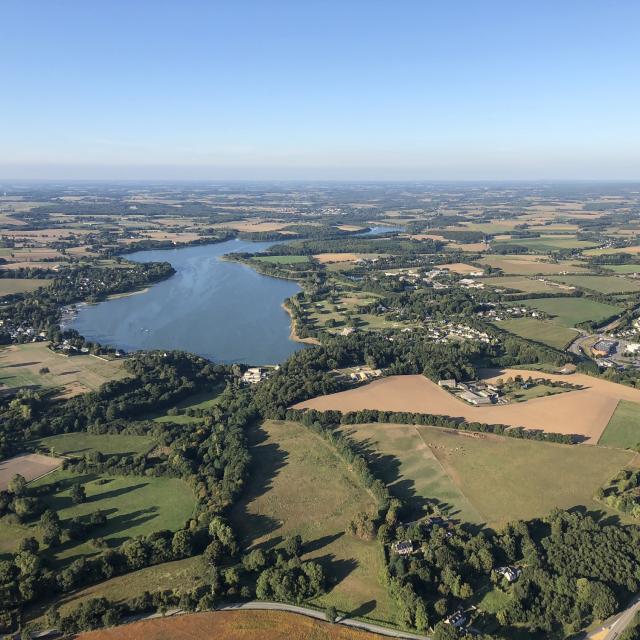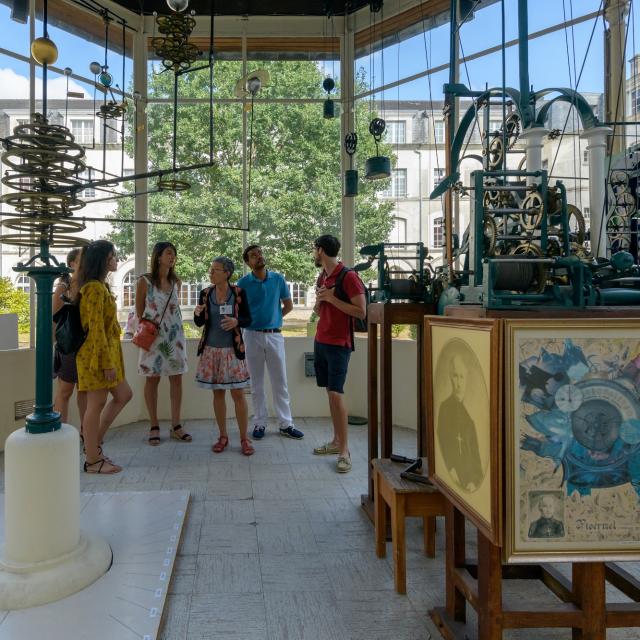Ploërmel is one of the oldest Breton cities. Dolmens and menhirs attest to the presence of man since the Neolithic period. During the Celtic period, a druidic site would have been erected on the site of the current Saint-Antoine chapel. The people who inhabited the region of Ploërmel were the Coriosolites or Corsiolites. In Roman times, Ploërmel was called Néodunum.
Nevertheless, it is said that the history of Ploërmel dates back to the 6th century with the arrival of a missionary monk. Chased by the Saxons, Armel arrived from his Britain with the mission to evangelize the population. He left his name to our town: Plou Armel (the parish of Armel) after having “converted” the beast of Guibourg and made an inexhaustible spring flow.
City attached to the bishopric of Saint Malo in the IXth century, it was honored from the XIIth to the XVIth century by the presence of the Dukes of Brittany and occupied an important place because of its strategic position. While Henry II Plantagenet, king of England had seized Brittany under the pretext of the engagement of his son Geoffrey with the daughter of Conan IV, Count Eudon du Porhoët, recovered Ploërmel in 1173. Fortifications appeared in the 12th century and the city developed until its peak in the 16th century (fairs, very important markets, courts and prisons, presence of religious orders) thanks to the regular presence of the Dukes of Brittany. On several occasions, the city hosted the parliament and then the states of Brittany gathering the highest dignitaries and knights of the duchy.
Engaged in the Hundred Years War through the War of Succession, it was the witness of the famous battle of the Thirty* on March 26, 1351.
In the 16th century, the city became part of the royal domain. The wars of the League were at the origin of the destruction of the Carmelite convent* which was later rebuilt. After the revolutionary period marked by a series of ambushes.
The foundation in 1824 of the congregation of the Brothers of Christian Instruction by Jean Marie de La Mennais, the commissioning of the electric factory on the edge of the Lac au Duc and the arrival of the railroad in 1882 revived the activity of Ploërmel, which became a small sub-prefecture for a few decades, playing its commercial, administrative and judicial role. In 1904, in reference to the law of separation of church and state, the brothers of La Mennais were expelled by the army and returned a few years later to develop and promote education in Ploërmel.
The 39-45 war, will also mark the city, the German occupation then the bombing of June 12, 1944 by the Americans, which destroyed the old Ploërmel and cost the life of tens of Ploërmelais.
It was not until the 1960’s that an economic recovery was observed and it is from this period that the great upheavals began: the reorganization of the land, which brought about the end of small farms and also of villages, customs and traditions.
The city develops, and multiplies its population by 2 in 50 years. Today it has more than 10,000 inhabitants. Its geographical location makes it an essential crossroads in Brittany, a real road junction because of the important roads that cross it, which were converted into the N24 and RN166 expressways at the end of the 20th century. It is also a small nerve center of a whole territory: at the same time economic, social and educational pole (5000 pupils of the 4 corners come to study there). Thus Ploërmel, land of legend, ancient ducal city bordered by the lake to the duke which is animated reminds forever who it is!
 Ploermel, L'église Saint-Armel
Ploermel, L'église Saint-Armel










